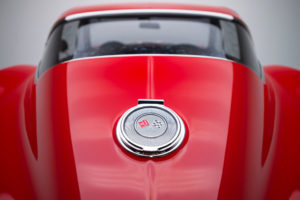Muscle cars have been a symbol of American automotive power for decades, evolving from raw, high-horsepower machines of the 1960s to the refined, high-performance models of today. While the classic muscle cars of the past hold a special place in automotive history, modern engineering has taken performance, efficiency, and technology to new heights. Let’s take a journey through the decades to see how muscle cars have evolved.
1960s: The Birth of the Muscle Car Era
The 1960s marked the golden age of muscle cars, with automakers introducing high-performance V8 engines in lightweight bodies. Some of the most iconic models were born during this time, including:
- 1964 Pontiac GTO – Often credited as the first true muscle car, the GTO packed a 389 cubic-inch V8, setting the stage for high-performance street cars.
- 1965 Ford Mustang – While initially marketed as a pony car, high-performance variants like the Shelby GT350 cemented its status as a muscle car legend.
- 1969 Dodge Charger – Known for its aggressive styling and powerful HEMI engines, the Charger became a staple in the muscle car world.
This decade was all about brute force—massive engines, minimal safety features, and an all-American attitude.
1970s: Peak Performance & The Beginning of Regulations
The early 1970s saw even more powerful muscle cars, with manufacturers pushing horsepower numbers to new heights. Some standout models included:
- 1970 Chevrolet Chevelle SS 454 – One of the most powerful muscle cars ever made, boasting up to 450 horsepower.
- 1971 Plymouth ‘Cuda 426 HEMI – A street beast with a reputation for dominance on the drag strip.
However, by the mid-1970s, new emissions regulations, rising fuel costs, and insurance restrictions led to a decline in muscle car performance. Horsepower numbers dropped, and the raw muscle of the ’60s began to fade.
1980s: The Muscle Car Revival Begins
After a rough period in the late 1970s, the muscle car began making a comeback. While horsepower numbers weren’t as high as the ’60s, automakers started focusing on handling and aerodynamics. Some notable models included:
- 1982 Chevrolet Camaro Z28 – A lighter, more aerodynamic version of the classic Camaro.
- 1987 Buick Grand National GNX – One of the most surprising muscle cars of the era, featuring a turbocharged V6 that could outrun many V8s.
- 1985 Ford Mustang 5.0 – The rebirth of Mustang’s performance with a high-output 5.0-liter V8.
1990s & 2000s: The Return of High Horsepower
By the 1990s and early 2000s, muscle cars had fully returned with a mix of power and modern technology. The introduction of fuel injection, improved transmissions, and better aerodynamics brought muscle cars into a new era.
- 1993 Ford Mustang Cobra – The first SVT Cobra brought advanced suspension and improved handling to the muscle car world.
- 2002 Pontiac Firebird Trans Am WS6 – One of the last great Pontiacs, featuring a powerful LS1 V8.
- 2008 Dodge Challenger SRT8 – A modern take on the classic Challenger, bringing back HEMI power.
Today: The Modern Muscle Car Renaissance
Today’s muscle cars blend raw power with cutting-edge technology, offering insane horsepower while still being street-friendly. Some of the most exciting modern muscle cars include:
- Dodge Challenger Hellcat Redeye – With over 797 horsepower, it’s one of the most powerful production muscle cars ever.
- Ford Mustang Shelby GT500 – A supercharged 5.2L V8 delivering 760 horsepower.
- Chevrolet Camaro ZL1 1LE – A track-ready monster with a supercharged V8 and precision handling.
Modern muscle cars also come with advanced features like launch control, adaptive suspensions, and even hybrid-assisted performance in some models. While they still retain the spirit of their 1960s ancestors, today’s muscle cars are faster, safer, and more efficient than ever.
The Legacy of Muscle Cars
From their street-racing roots to their modern-day dominance, muscle cars have remained a staple of American automotive culture. Whether you’re drawn to the raw power of a ’69 Camaro or the high-tech performance of a new Hellcat, one thing is clear—muscle cars are here to stay.


